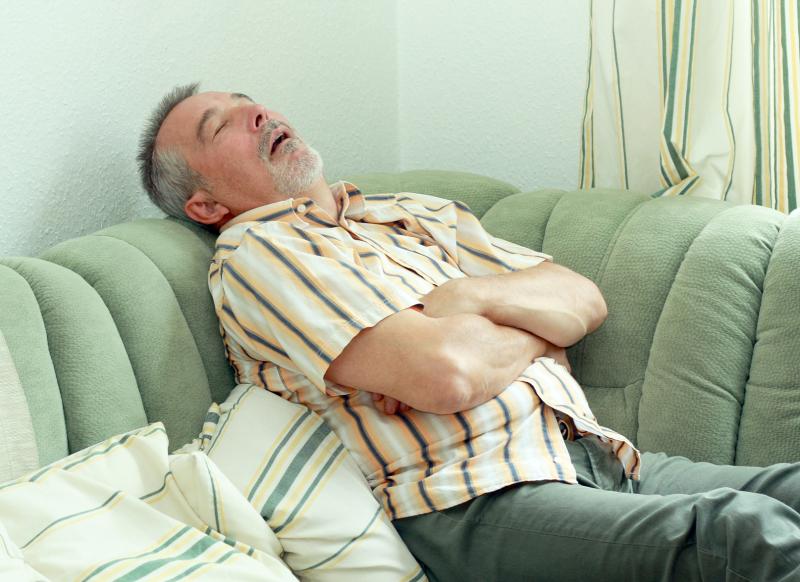
A transthoracic impedance-based monitoring system reliably and automatically detects sleep-related breathing disorders (SRBDs), according to a recent study.
“The ability of the ApneaScan algorithm to identify patients with SRBD seemed high, thus requiring further investigation of the severity and form of apnoea, and possibly necessitating additional therapy,” said researchers. “The device-calculated [respiratory disturbance index (RDI)] value appeared to accurately identify severe SRBD.”
Thirty-one patients (mean age, 70±8 years; 64.5 percent male) scheduled for implantation of pacemakers (PMK) or implantable cardioverter defibrillators (ICD) were enrolled. Two patients had no available RDI values. In the remaining 29, the mean home sleep monitoring (HSM) apnoea-hypopnoea index (AHI) value was 23±19 episodes per hour. [J Interv Card Electrophysiol 2019;doi:10.1007/s10840-019-00631-x]
Seven participants were diagnosed with severe sleep apnoea, corresponding to an incidence rate of 24.1 percent. These patients had significantly elevated RDI values (65±18 vs 24±12 episodes per hour; p<0.001).
Receiver operating characteristic curve analysis showed that at a cutoff value of 32 episodes per hour, the device-measured RDI had a sensitivity of 71 percent and specificity of 81 percent for detecting severe sleep apnoea.
However, the optimal threshold was found to be 47 episodes per hour, at which value the RDI was able to detect severe sleep apnoea with a specificity and sensitivity of 100 percent each. Moreover, the agreement was good between the device-obtained RDI and nocturnal polysomnography AHI (r, 0.80, 95 percent CI, 0.61–0.90; p<0.001).
Notably, because the novel device allows continuous and daily surveillance of the RDI, researchers were able to detect wide day-to-day changes in respiratory disturbances.
“This critical issue is actually well known in sleep medicine; the AHI shows an important inter-individual variability, especially when applied in classification or as a criterion of therapeutic success during a single recording,” they explained. “In this perspective, continuous monitoring of nocturnal apnoea/hypopnoea episodes becomes of utmost importance for diagnostic and therapeutic purposes.”
In the present study, the test device and respective pacing leads were implanted in the participants using standard techniques. HSM of the AHI using polygraphy was conducted a month after device implantation and readings from the novel monitoring system were collected the morning after. Participants with moderate-to-severe chronic obstructive pulmonary disease were excluded.
“Although there was good agreement between HSM-AHI and ApneaScan-RDI measurements recorded during the sleep study night, this device feature should be considered for screening purposes only and not as an alternative to home or laboratory sleep monitoring studies,” said the researchers.
“Nevertheless, ApneaScan may be considered an efficient tool for prescreening patients who require additional investigation, within the framework of a complete management program, even if full polysomnography may confirm or increase its potential use,” they added.